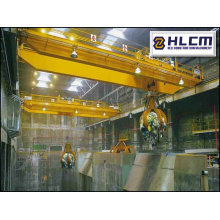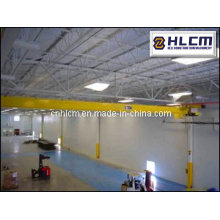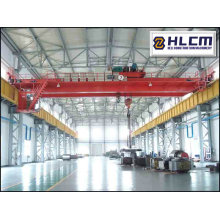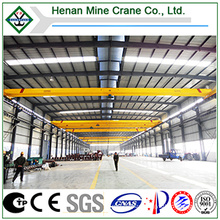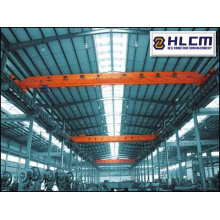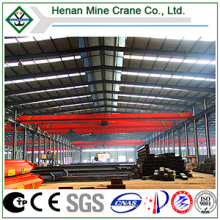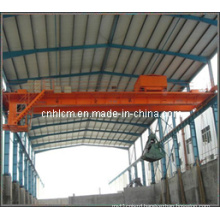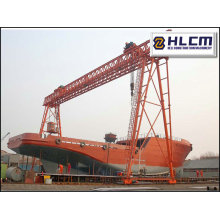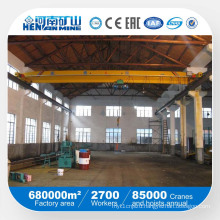Truck Crane and Tire Crane Safety Regulations
2021-04-19
China Automotive Network Truck Crane Columns Listed by China Ministry of Industry and Information Technology Automobile Cranes Automobiles Announcement All 4 Categories 40 Manufacturers 35 Truck Crane Brands 1258 Truck Cranes Product Information, Latest Truck Crane Announcements, Environmental Notices, Fuel Bulletins, Free Announcements, pictures, news and information on the most timely prices of truck crane quotes.
JB8716-1998
This standard will replace ZB J80 002-86 from the date of implementation.
This standard was proposed and managed by the Changsha Construction Machinery Research Institute of the Ministry of Construction.
This standard was drafted by the Ministry of Construction: Changsha Construction Machinery Research Institute.
The main drafters of this standard: You Xiaoping, Cao Zhongmei, Huang Yihong.
This standard was first published on November 4, 1986.
This standard was commissioned by the Changsha Construction Machinery Research Institute of the Ministry of Construction to be responsible for the interpretation.
1 Scope
This standard specifies the safety technical requirements for the design, manufacture, inspection, scrapping, use and management of truck cranes and tire cranes.
This standard applies to truck cranes and tire cranes (hereinafter referred to as cranes).
2 Reference standards
The provisions contained in the following standards are incorporated into this standard and constitute the provisions of this standard. At the time of publication, the editions indicated were valid. All standards will be revised and all parties using this standard should explore the possibility of using the latest version of the following standards.
GB 700--88 ordinary carbon structural steel
GB 979-88 High Quality Carbon Steel
GB 1591-88 Low alloy structural steel technical conditions
GB 3766-83 general technical conditions of hydraulic system
GB 3811—83 crane design specification
GB 4785—84 Provisions for the number, location and light color of exterior lighting and signalling devices for cars and trailers
GB 5972-86 Steel Wire Rope Inspection and Disposal Practice for Hoisting Machinery
GB/T 5973-86 Wedge joints for wire ropes
GB/T 5975-86 wire rope press plate
GB/T 5976-86 wire rope clamp
GB 6067-85 Crane Safety Regulations
GB 6068.1—85 General Requirements for Test Codes for Truck Cranes and Tire Cranes
Determination of the stability of GB 6068.3—85 truck crane and tire crane test specification
GB 7258—1997 Operational Safety Technical Conditions of Motor Vehicles
GB 7950-87 General Specifications for Lifting Torque Limiter for Jib Cranes
GB 10051.1—88 lifting hooks, mechanical properties, lifting capacity, stress and materials
GB 11352-89 Technical conditions for casting carbon steel for general engineering
JB 2299-78 Mining and Engineering Lifting and Transporting Machinery Products Paint Color and Safety Signs
JB 3774.1—84 Construction Machinery Noise Limit
JB 4031-85 Truck Crane and Tire Crane Signage
ZB E39 003-87 Selection and Replacement of Hydraulic Oils for Truck Cranes and Tire Cranes
ZB J80 003—87 Technical Requirements for Truck Cranes and Tire Cranes 3
3.1 The operating conditions of the crane shall comply with the provisions of ZB J80 003 and GB 6068.1.
3.2 The crane shall have a rated lifting weight table, lifting height curve signs and other safety signs. They must be fixed in a position easily visible to the operator. Its content and format should refer to the provisions of JB 4031. At the same time, the words “No stand under the jib arm” should be written in a prominent font in the proper position of the main arm.
3.3 For telescopic cranes that are not equipped with a moment limiter, their arm lengths are to operate at the midpoint of a given length on the rated lifting capacity table, and at their respective amplitude, they are allowed to have a smaller value for the rated lifting weight of the adjacent arm.
3.4 When the crane is delivered from the factory, the product label shall be fixed in a prominent position.
3.5 The random technical documents provided by the crane at the factory shall meet the requirements of 2.19 in ZB J80 003-87.
3.6 Unqualified cranes are not allowed to leave the factory.
3.7 During the test of the crane, safety precautions shall be taken in the dangerous conditions that may be caused to ensure the safety of the personnel and the whole machine.
3.8 The stability of the crane shall comply with the provisions of GB 6068.3. When the crane is conducting a stability test, in addition to the special requirements in the contract, the test load shall be determined by the following formula:
a) 1.25Pi+0.1Fi when supporting legs
b) Wheel (tire) support (static) 1.33Pi+0.1Fi
c) When traveling with load (carrying speed is less than or equal to 14km/h) 1.33Pi+0.1Fi
d) When traveling with load (carrying speed greater than 14km/h) 1.5Pi+0.1Fi
Where: Pi - rated weight;
Fi - The weight of the boom G is converted to the weight of the boom head or the jib head.
3.9 When lifting legs are used for lifting work, the legs shall be firmly supported on a solid level ground. The slewing bearing plane shall be installed on the frame with an inclination of not more than 0.5%.
3.10 The paint colors and warning patterns of cranes shall comply with JB 2299.
4 Structure and Construction
4.1 Materials
4.1.1 The main load-carrying structural members of the crane's metal structure generally adopt the quality carbon steels Q235-B, C, D and GB 699 specified in GB 700 and the low-alloy structural steels 16 Mn specified in GB 1591. , 15 MnTi and so on.
The main bearing structure of the crane should be killed steel. The impact energy of the steel at the corresponding use temperature shall not be lower than 27 N·m for Q235-B, C, D steels and 40 N·m for other steels, and shall meet the 180° cold bend test requirements at room temperature. The Q235-D steel, 20 steel, etc. used for the main load-bearing structural parts of cranes operating in areas below 20°C should have a 20°C impact toughness qualification guarantee; for a 16Mn, 15MnTi steel, etc., a 40°C impact toughness qualification guarantee must be provided. . If necessary, it shall have the qualification guarantee of cold bending test.
Steel castings shall comply with the steel grades specified in GB 11352.
4.1.2 The factory inspection system shall be implemented for the raw materials used.
4.2 Connection
4.2.1 welded connection
The welding requirements for the major weld structures of main load-bearing structures such as base frames, legs, turntables, and booms, as well as general load-bearing structures, shall comply with the provisions of 1.2 of GB 6067-85. Weld quality should meet design requirements.
4.2.2 Rivet Connections and Bolted Connections
4.2.2.1 Rivet connections and bolt connections are to comply with the provisions of 3.4.2.2 of GB 3811-83.
4.2.2.2 Connections with high-strength bolted joints shall be free from dust, paint, traces of oil and corrosion on their joint surfaces. Must use torque wrench or special wrench, according to assembly technology requirements tighten.
4.3 Cab and Control Room
4.3.1 The cab and control room must meet the requirements of 4.12 in ZB J80 003-87 and 1.4 in GB 6067-85.
4.3.2 The top of the cab and control room can withstand a load of 1 000 N distributed over an area of (30 x 30) cm2 without permanent deformation.
4.3.3 The control room should be equipped with sun visors and wipers.
4.4 Retirement of Metal Structures
4.4.1 The scrapping of metal structures shall comply with the provisions of 1.10 of GB 6067-85.
4.4.2 For components that have been replaced or repaired after the stabilizers or undercarriage have been replaced or repaired, the stress shall not be higher than the original calculated stress, otherwise it shall be scrapped.
5 Institutions and Parts
5.1 General requirements
5.1.1 Lifting arm
For telescopic booms, the maximum average lateral clearance of each joint arm shall not exceed 2.5 mm. Otherwise, the slider needs to be adjusted.
5.1.2 Outriggers
5.1.2.1 When the crane is in a running state, the legs should be retracted and fixed securely.
5.1.2.2 When operating the outrigger, the operator should be able to see each outrigger at the operation. Otherwise, there should be help from signal personnel.
5.1.2.3 In the lifting operation, the support plate should be firmly connected to the legs, and the legs should support the crane reliably.
5.1.3 Protection of moving parts
All exposed moving parts (such as open gears, chains, sprockets, protruding pins, bolts, couplings, reciprocating parts, etc.) that may be dangerous under normal working conditions should be installed with protection Device (protective cover or guardrail).
5.1.4 Brakes shall be equipped with rain protection devices.
5.1.5 The exhaust pipe of the engine should be equipped with a muffler. The exhaust pipe should be located away from the operator. Noise limits when the crane is running shall meet the requirements of GB 7258, and the noise limits during lifting shall comply with JB 3774.1.
5.1.6 The capacity of the fuel tank should at least ensure the normal operation of the crane for 8 hours, and should be equipped with a device to measure the amount of oil in the fuel tank.
5.2 Hook 5.2.1 Design and selection of the hook shall comply with the provisions of GB 10051.1.
5.2.2 The hook should meet the requirements of 2.1.1, 2.1.2, 2.1.3, 2.1.4, 2.1.6 and 2.1.7 of GB 6067-85 Provisions.
5.2.3 hook welding is prohibited. One of the following cases should be scrapped:
a) Observe cracks and cracks on the surface with a 20x magnifying glass;
b) permanent deformation of dangerous sections and hooks such as hook tails and threaded parts;
c) The wear of the cross section of the lanyard exceeds 5% of the original height;
d) The opening is 10% larger than the original size.
5.3 wire rope
5.3.1 The selection of wire ropes and the determination of the safety factor shall be in accordance with 4.4.2.1, 4.4.2.2 of GB 3811-83 and 4.10.1, 4. of ZB J80 003-87. The provisions of 10.2.
5.3.2 The type, specification and length of wire rope shall be stated in the random use instructions.
5.3.3 The installation, inspection and scrapping of steel wire ropes shall comply with the provisions of GB 5972.
5.3.4 The fixing of the end of the wire rope should meet the following requirements:
a) When fixed by wire rope clamps, it shall meet the requirements of GB/T 5976, and the strength of the fixing shall not be less than 85% of the breaking force of the wire rope;
b) When inserting and fixing, the length of the braiding should not be less than 20 times the diameter of the steel wire rope and not less than 300mm, and the fixing strength should not be less than 75% of the breaking force of the wire rope;
c) When the wedge and wedge sleeve are fixed, the wedge and wedge sleeve shall meet the requirements of GB/T 5973, and the strength of the fixed joint shall not be less than 75% of the breaking force of the wire rope;
d) When fixed by conical sleeve casting method, the fixing strength should reach the breaking force of the wire rope;
e) When using aluminum alloy sleeves and steel sleeves, the aluminum alloy sleeves, steel sleeves and wire ropes should be tightly and firmly bonded together with a reliable process method. The strength of the fixed joints should reach 90% of the breaking force of the wire ropes.
f) When fixed with a pressure plate, the pressure plate shall meet the requirements of GB/T 5975, and the strength of the fixation shall reach the breaking force of the steel wire rope.
5.3.5 Wire ropes should be arranged in order on the drum.
5.3.6 Lifting wire ropes should use wire ropes that do not rotate or loose.
5.3.7 Maintenance of Wire Ropes
a) In addition to complying with the provisions of GB 6067, the wire rope shall also be maintained according to the following provisions: The wire rope shall be lubricated at least twice a month before use; clean the wire rope with a cloth before lubrication, and then apply grease or grease; The types of lubricating oils and greases shall comply with the factory instructions of the wire rope factory.
b) Before cutting off the wire rope, bundle it on both sides of the wire rope cut to prevent the rope strands from spreading.
5.3.8 Wire Rope Inspection
The ropes of the
Hoisting Mechanism shall be inspected at least once a week. The rest of the operating ropes shall be inspected at least once a month. The condition report of the ropes shall be filled in in detail, be dated, signed and put into the equipment file for future reference.
When the crane is parked or stored so that all steel ropes are idle for one month or more, a thorough inspection should be performed before re-use.
5.4 Reels and Pulleys
5.4.1 The calculation of the minimum winding diameter of reels and pulleys shall comply with the provisions of 4.4.2.3 of GB 3811-83.
5.4.2 Lifting drums shall have a sufficient amount of rope capacity. When the hook is at the lowest position specified by the manufacturer, at least three loops of wire rope must be retained on the drum and appropriate protective measures must be taken. The height of the sides of the roll should exceed 1.5 times the nominal diameter of the outermost wire rope in operation.
5.4.3 Retirement of Reels and Pulleys
One of the following conditions for reels and pulleys should be scrapped:
a) crack or rim damage;
b) The wear of the drum groove exceeds 25% of the wire rope diameter;
c) The wear of the welded pulley exceeds 20% of the rim plate thickness;
d) The other pulley groove bottom wear exceeds 25% of the wire rope diameter.
5.5 Lifting mechanism
5.5.1 Each independent drive unit of the hoisting mechanism shall be equipped with at least one supporting brake. The supporting brake shall be normally closed. It must be able to sustainably support the rated weight. The brake must be installed in the transmission. The mechanism is rigidly coupled to the load shaft.
5.5.2 The hydraulic circuit of the hydraulic lifting mechanism must be equipped with a balancing valve that is compatible with its flow.
5.5.3 For special lifting mechanisms that require gravity to be used, there shall be reliable and actuatable brakes.
5.6 Luffing Mechanism
5.6.1 The luffing mechanism shall be able to reliably support the boom and allow the boom to be smoothly lowered to the specified amplitude under operator control.
5.6.2 The lifting of the boom must rely on the power system to complete.
5.6.3 Normally-closed brakes shall be provided in the mechanism for lifting the boom by wire rope.
5.6.4 The mechanism for lifting the lifting boom with a hydraulic cylinder must be equipped with a balancing valve that is suitable for its flow rate.
5.7 Lifting arm telescopic mechanism
Retractable hydraulic cylinders must be equipped with a balancing valve that is suitable for their flow.
5.8 Slewing Rings and Slewing Mechanisms
Slewing rings and slewing gears are to comply with the requirements of 4.9 of ZB J80 003-87.
5.9 Use and Inspection of Brake
5.9.1 The brake selection of each institution shall comply with the provisions of GB 3811.
5.9.2 Before each shift, it is necessary to check whether the brake operation is normal and whether there is any seizure. Then lift the heavy object 150-200mm from the ground, hold it for 10 minutes, check the brake, and confirm that it is normal before lifting.
5.9.3 One of the following conditions for brake parts shall be scrapped:
a) crack;
b) The brake pad friction pad wear amounted to 50% of the original pad thickness;
c) The wear of the brake wheel surface is 1.5 ~ 2mm (larger than 300mm wheel diameter, otherwise take a small value);
d) plastic deformation occurs in the spring;
e) The solenoid lever system has an idle stroke of more than 10% of its rated travel;
f) The starting stroke of the solenoid core exceeds half of the rated stroke;
g) The contact area of the brake pad friction pad and the brake roller is less than 70% of the theoretical contact area;
h) failure of brake pads;
i) The amount of friction of the friction lining on the brake pad is too large to disable the disc brake.
5.10 Driving and Braking
5.10.1 Cranes shall meet the requirements of ZB J80 003.
5.10.2 On concrete or asphalt pavement, when the maximum traveling speed of the crane exceeds 30km/h, braking shall be carried out at a speed of 30km/h;
When the maximum traveling speed of the crane is less than 30km/h, braking is performed according to the maximum traveling speed of the crane. The braking distance should not exceed the design specification.
5.10.3 The parking brake of the crane must enable the crane to reliably stop at the specified maximum slope.
5.10.4 The crane's driving system and service brakes shall comply with the provisions of GB 7258.
6 Hydraulic system
The hydraulic system shall comply with the provisions of GB 3766, GB 6067 and ZB J80 003.
6.1 The hydraulic system shall have safety devices to prevent overload. The set pressure of the safety relief valve shall not be greater than 110% of the rated working pressure of the system, and shall not be greater than the rated pressure of the hydraulic pump.
6.2 The balance valve and hydraulic lock must be rigidly connected to the actuator.
6.3 The maximum working oil temperature in the hydraulic tank must not exceed 80 °C.
6.4 If the parts with relative movements are connected by hoses, the length of the hoses should be shortened as much as possible and frictional collisions should be avoided. Exposed hoses that are susceptible to damage should be protected by a protective sleeve. Check the various links in the system regularly.
6.5 Reliable filters should be used. Oil viscosity, acid value, water content, and solid particle contamination must be regularly checked. If it does not meet the requirements, it should be promptly replaced. Its requirements shall comply with the provisions of ZB E39 003. Replace the hydraulic fluid with the appropriate viscosity according to the season of use. Mixing oil is strictly prohibited.
6.6 When using accumulators in the system, safety warning signs must be marked on or near the accumulator. Accumulator volume and installation must comply with manufacturer's regulations.
7 safety protection device
7.1 Cranes with a capacity of 16t and over 16t shall be equipped with a torque limiter, and their requirements shall comply with the provisions of GB 7950.
7.2 Cranes with a lifting capacity of less than 16 tons shall be equipped with a weight indicator. Their requirements shall be in accordance with 7.4 of ZB J80 003-87.
7.3 Cranes shall be equipped with lifting height limiters. The lifting height limiter shall be able to reliably alarm and stop the lifting of the hooks. Only descending operations may be performed.
7.4 Cranes using wire rope luffing should be equipped with amplitude limiting devices and devices to prevent the tilting of the boom.
7.5 The crane shall be equipped with a clearly visible amplitude indicator (or elevation indicator) whose requirements shall comply with 7.3 of ZB J80 003-87. The installed amplitude indicator should be easy for the driver to observe while operating.
7.6 Cranes shall be equipped with spirit levels for cranes with a capacity greater than or equal to 16 tons.
7.7 The crane should be equipped with a horn. The position of the horn button should be easy for the driver to operate.
7.8 For gantry cranes with lifting height greater than 50m, an anemometer should be installed at the arm head. When the wind speed is greater than the working limit wind speed, it should be able to issue an alarm to stop the operation.
7.9 The pulley should have anti-roping rope skipping device. For a hand-accessible pulley block, a protective device shall be provided to prevent the hand from squeezing between the wire rope and the pulley.
7.10 Cranes that can be operated in two places shall be provided with interlocking protection devices to prevent simultaneous operation.
7.11 Newly designed crane transmissions and safety devices must undergo various tests of the components in accordance with the relevant special test standards.
8 Electrical system
8.1 Electric powered cranes shall comply with the provisions of GB 6067 and ZB J80 003.
8.2 The electrical connections should be in good contact to prevent loosening and the wires and harnesses should be securely fixed.
8.3 Power-driven cranes must be provided with an emergency switch capable of switching off the mains supply. The installation site should be easy for the driver to operate.
8.4 An internal combustion engine-driven crane shall be provided with a flameout device in the upper cab control room.
8.5 All electrical controllers that control the motion of the crane mechanism shall have zero and ground protection.
8.6 The lighting and signaling devices of the crane shall comply with the relevant provisions of GB 4785 and GB 7258.
8.7 The crane should be equipped with lighting equipment for evening operation.
9 operating system
9.1 The layout of the control system should avoid misoperation and be easy to operate.
9.2 Joysticks and pedals shall be automatically reset when rigid retaining devices are not used.
9.3 There shall be clear signs indicating the use and direction of operation on or near all joysticks, pedals, etc.
9.4 The operation shall be light and flexible. The operation force and operation stroke shall comply with the provisions of ZB J80 003.
9.5 Cranes operated with joysticks and foot pedals are arranged as shown in Fig. 1.
9.5.1 Swivel Operation - Handle 1:
Push the handle forward (away from the driver).
- Swivel to the right (control room left or center);
- Turn left (control room is right).
When the handle is in the middle position, the rotary power is cut off.
Pull the handle backwards (towards the driver) and turn it in the opposite direction.
9.5.2 Telescoping controls - handle 2 or pedal 5:
Push the handle forward and extend the boom. With the handle in the middle, keep the boom in place. Pull back the handle and retract the boom. Pedal 5 is available as an alternative to handle 2 .
9.5.3 Luffing - Handle 3:
Pull back the handle and raise the boom. With the handle in the middle, keep the boom in place. Push the handle forward and lower the boom.
9.5.4 Lifting controls - handle 4 and brake pedal 6:
Pull the handle backwards, lift the load, cut the lifting power when the handle is in the middle position, and keep the load (if equipped with automatic brake) or control the load by pressing the brake pedal. Push the handle forward and lower the load.
9.5.5 Figure 1 shows the basic layout of crane operation; generally, the handle or pedal in Figure 1 can be increased or decreased as required.
9.6 The pilot operated crane is arranged as shown in Fig. 2.
9.6.1 Lift II and Swivel Operation - Handle 1 and Pedal 5
9.6.1.1 Pull back the handle to lift the load. With the handle in the neutral position, keep the load still (if equipped with an automatic brake) or depress the brake pedal to control the load. Push the handle forward and lower the load.
9.6.1.2 Move the handle to the left and turn it to the left. When the handle is in the middle position, the rotary power is cut off. Move the handle to the right and turn it to the right.
9.6.2 Lift I and Lever Control - Handle 2 and Pedal 6
9.6.2.1 Pull back the handle to lift the load. With the handle in the neutral position, keep the load still (if equipped with an automatic brake) or depress the brake pedal to control the load. Push the handle forward and lower the load.
9.6.2.2 Move the handle to the left and raise the boom. With the handle in the middle position, keep the boom in place. Move the handle to the right to drop the boom.
9.6.3 Telescopic boom control
9.6.3.1 Handle 3:
Push the handle forward and extend the boom. With the handle in the middle position, keep the boom in place. Pull back the handle and retract the boom.
Note: The handle 3 can be an independent handle, and the telescopic function of the boom can be the forward and backward movement of the handle 1 .
9.6.3.2 Use footrest 4 (optional) instead of handle 3:
Push the pedal forward (toe down pressure) and the boom extends. When the pedal is in the middle, keep the boom in place. Push the pedal backward (heel down) and the boom retracts.
10 Use and Management
10.1 The crane use conditions must comply with the provisions of ZB J80 003. When exceeding the above requirements, the user shall negotiate with the manufacturer when ordering.
10.2 The user must establish a crane equipment file. The file should include:
a) Every time you start, record with time, location and working condition;
b) records of daily use, maintenance, repairs, changes, inspections and tests;
c) Equipment and personal accident records;
d) Problems and evaluations of equipment.
10.3 The crane must be maintained regularly and no sick work is strictly prohibited.
10.4 When working near power lines or in areas with strong electromagnetic induction, cranes should be provided with proximity power line alarms or electromagnetic wave induction measures. The minimum distance between the lifting arm, spreader, auxiliary equipment, wire rope, cable wind rope, and heavy object, etc., and the transmission line should not be less than the requirements in Table 1.
Table 1 Minimum distance to transmission lines
[td 142 ] Transmission line voltage V kV [td 69 ]<1 [td 72 ]1 to 35 [td 96 ]≥60
[td 142 ] Minimum distance m [td 69 ]1.5 [td 72 ]3 [td 96 ]0.01 (V-50)+3
10.5 The crane shall not operate in dark trenches, underground pipelines, air-raid shelters, etc.
10.6 Do not overload the work. Do not allow diagonally slanting items, do not allow to hang staggered items, and do not allow to hang objects buried in the ground or frozen on the ground.
10.7 It is generally not allowed to use two or more cranes to lift a heavy object at the same time. The special circumstances need to be used shall comply with the provisions of GB 6067-85 5.1.2.3.
10.8 It is forbidden to carry gravity down.
10.9 The wind power of the crane must not exceed the specified value of the product instruction manual.
10.10 Before lifting the work with the legs, the legs must be firmly and reliably laid out according to the instructions.
10.11 During the operation of the crane, no one shall stand on the turntable. When the truck crane is in motion, it is forbidden to sit on the cab control room.
10.12 When lifting a work, it is forbidden to stand under the jib, and it is not allowed to lift heavy objects when someone is on the weight. Workers on the job site wear helmets.
10.13 The crane should be shut down during maintenance. When checking the amount of fuel or adding fuel, do not smoke or use open flame lighting.
10.14 The management of cranes shall comply with the provisions of 5.2 of GB 6067-85.
11 Driver and Crane Command
11.1 Crane drivers and lifting conductors must pass through the body. After passing inspections and examinations, they will be able to operate and direct with an operation certificate and a commanding certificate.
11.2 The crane driver must understand the working principle, be familiar with the structure of the crane, the function of the safety device and its adjustment methods, and master the operation methods and maintenance techniques.
11.3 When the heavy object is in suspension, the driver and lifting command must not leave the job.
11.4 The crane driver must concentrate on his operations and cannot chat with other people. Only respond to signals from designated commanders. But for the stop signal, no matter who sent it. Obey at all times. Drivers should refuse to perform instructions that do not comply with the operating instructions. When someone climbs on a crane, they must stop.
11.5 When the crane driver is unwell or has a bad spirit, the crane should not be operated. The driver is strictly prohibited from drinking.
Luffing tower cranes are a type of tower crane commonly used in construction projects. Unlike traditional tower cranes, luffing tower cranes have a jib that can be raised or lowered to adjust the height and reach of the crane. This allows them to work in tight spaces or in areas with height restrictions.
Luffing tower cranes are especially useful in urban environments where space is limited. The ability to adjust the jib angle allows the crane to work around obstacles such as buildings or other structures. They are often seen on high-rise construction sites, where their versatility and compact design make them ideal for lifting and moving heavy loads.
The luffing mechanism of these cranes allows for precise control over the load, making them suitable for projects that require delicate or precise movements. They are also known for their quick and efficient operation, with the ability to lift heavy loads to great heights in a relatively short amount of time.
Overall, luffing tower cranes are a valuable asset in the construction industry, providing flexibility, efficiency, and safety in various construction projects.
Luffing Crane,
Luffing Jib Crane,
Inner Climbing Tower Crane,
Luffing Jib Tower Crane,
Tower Crane 10tOverhead Crane,Gantry Crane,Working Platform Co., Ltd. http://www.sysuspendedplatform.com
